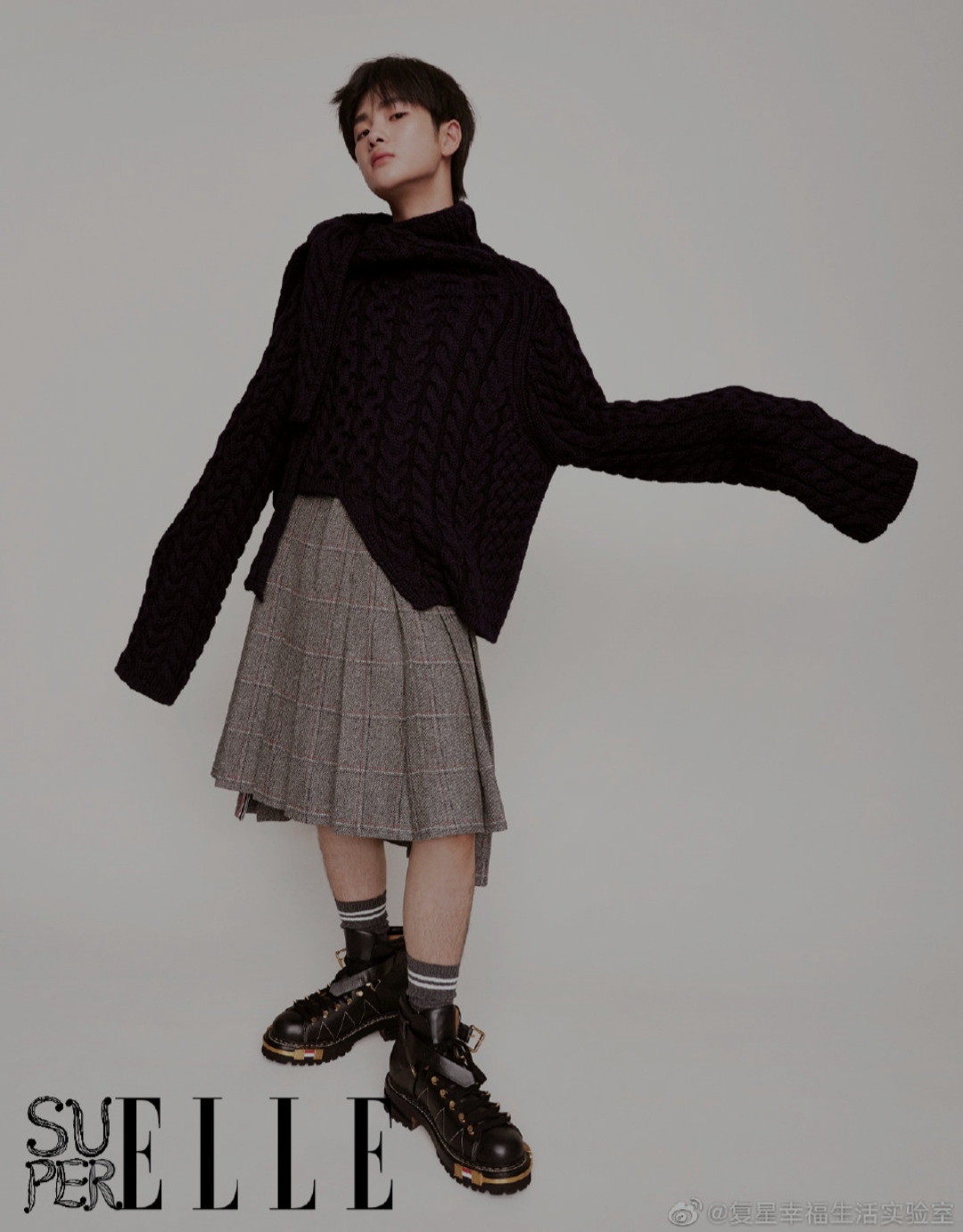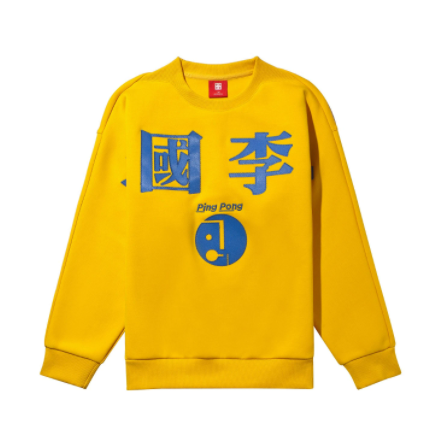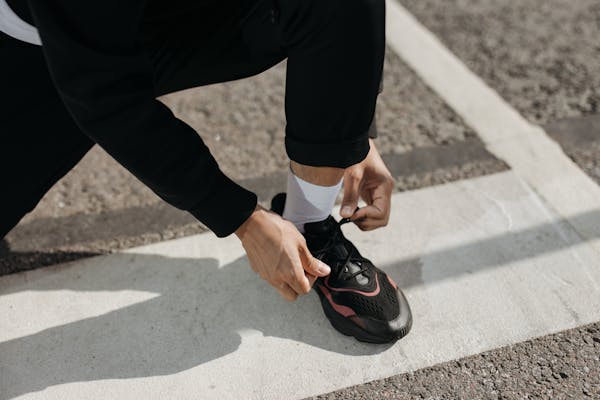Chinese male consumers are increasingly keen to spend money on clothes. Between 2009 and 2019, the men’s fashion market in China grew steadily, reaching 594.9 billion RMB in 2019, recording a year-on-year increase of 4.07%. Moreover, male consumers spend on average more than 1,500 RMB on clothing.
According to Euromonitor, Chinese male consumers’ top three favorite brands are HLA, Adidas and Bosideng, respectively accounting for 4.7%, 2.4%, 2.3% of total sales in 2019: it is the sixth year in a row that HLA holds the lion share of Chinese men’s fashion industry. Foreign luxury and fast fashion brands dominate the menswear market in higher tier cities, making life difficult for local competitors. Five major trends can be observed in men’s fashion in China that can help us to have a glimpse of where male apparel market is going and how to reach male fashion consumers.
Chinese men’s fashion brands are going digital
The outbreak of Covid-19 disrupted the fashion industry and forced brands to experiment on new ways to connect with their Chinese audience. Participants of Paris and Milano Fashion Weeks had to rely heavily on new media to present their Spring-Summer 2022 Men’s collections to Chinese customers. For instance, Louis Vuitton decided to have a live stream show on Chinese video platform Kuaishou, reaching around 40 million viewers. Before the event, the French Maison collaborated with five Chinese male celebrities, Kris Wu, Gong Jun, Dylan Wang, Chase and INTO1-Mika, to release some promotional teasers on all the most famous Chinese social network platforms. The Italian luxury brand Prada, instead, split its catwalk show between Milan and Shanghai, inviting all its Chinese KOLs to attend the event at the Rong Zhai Residence. Overall, about 16 million people watched the livestream of Prada’s fashion show on Weibo, Douyin and the official brand’s website.
Breaking the boundaries between male and female
On occasion of the International Men’s Day, the data analytics and brand consulting company Kantar published the What Makes a Man 2019 Survey for the Italian menswear luxury company Ermenegildo Zegna, highlighting men’s difficulties to be themselves in society. According to such study, about 89% of Chinese participants said that they played up their masculinity at work. However, younger generations feel more and more dissatisfied with traditional gender labels and are willing to explore alternative ways of expressing themselves. The constant contradiction between Wu 武 and Wen 文 men idealtypes is gradually resolving as a softer and more fluid concept of manliness gains ground at the expense of the warrior masculinity embodied by the famous Chinese kung fu stars of the past.
Being aware of such social transformation, brands decide to accompany Chinese men in their quest for sexual freedom providing them with genderless, cross-gender and non-labeled clothing. It is no coincidence that Prada chose the young Gen-Z idol Cai Xukun as its spokesperson, since the singer, rapper and actor incarnates such new concept of masculinity in China. Along with other Chinese celebrities such as Zhou Zhennan and Wang Yibo, last year Cai Xukun went public wearing a skirt, triggering an animated discussion about manliness on Chinese social media.

Integrating urban details into high fashion
According to OFashion and Nielsen report, in 2018 streetwear brands in China boasted a growth rate of 60%, while non-streetwear ones recorded a meagre 17% increase. Between 2015 and 2019 Chinese men’s consumption in urban clothing soared from 29% to 36%, boosting the sales of sweatshirts, shoes and T-shirts. Chinese Millennials and Gen-Z consumers are the engine of the recent boom in the streetwear market in China. Such trend is involving both Tier-1 and lower tier cities: in 2018 urban apparel in Qinghai province experienced a 385% rise. The influence of K-pop in China and the successful hip-hop talent show The Rap of China played a major role in promoting streetwear nationwide, by making niche urban clothing brands known to the general public.
Surfing such streetwear fever in China, luxury brands decided to add urban features to their collections. That is the case of Burberry, which decided to stage its menswear presentation for this year Paris Fashion Week in an urban landscape and mingled its traditional taste with high street elements, such as sneakers and hoodies. Instead, in its collection Duality, Hermès mixed formal and leisure wear to offer its customers the perfect outfit for any occasion.

Men’s fashion in China is embracing Guochao
Men’s fashion in China did not remain untouched from young generations’ tendency to prefer brands capable of combining Chinese cultural elements with modern designs. Founded in 2013, Atelier Rouge Pékin embodies this attempt to rediscover Chinese roots by reinventing traditional cuts and material to adapt them to contemporary needs. Chinese activewear brand Lining renewed its brand precisely through incorporating more Chinese designs, risking to bind its future to the current Guochao trend.
Following such a trend is not an easy undertaking for foreign companies since falling into cliché could result into harsh criticism and, in the worst-case scenario, it could lead to boycotts. The French fashion giant Dior revealed to be quite good at meeting the tastes of Chinese young consumers. Indeed, its 2021 Fall-Winter menswear collection mingling traditional Chinese techniques, symbols and materials with modern fashion had a great success among Chinese consumers: the hashtag “Dior 2021 Fall Menswear” got 340 million views on Weibo and many positive comments.

Chinese consumers get nostalgic
The Guochao wave is on a certain extent linked to Chinese consumers growing attachment to the past. According to Wuhan University of Science and Technology, in 2018 about 80% of Chinese employees declared being under mental and physical stress at an average or higher level due to their huge amount of work. Moreover, according to a survey carried out by Statista, 47% of Chinese respondents believed to be likely to suffer loneliness during 2020. Escaping from an increasingly atomistic and competitive society, Chinese Millennials and Gen-Zs seek relief in the reassuring memory of the past.
Brands can meet such psychological needs by leveraging nostalgia marketing tools which enhance consumers’ engagement through building up communities of kindred individuals. Lining’s and Anta’s current success can be partly traced back to the nostalgia effect they can trigger in Chinese young customers, since they used to be quite popular during 90s.
Despite the fact that some of them entered Chinese market not that long ago, Western brands are capitalizing on Millennials and Gen-Zs’ nostalgia as well. For instance, Dior collaborated with Chinese-American actor Chen Feiyu to relaunch its retro-style saddlebag for its Fall 2020 Men’s Collection. That same year both Uniqlo and Puma, instead, released a Super Mario-themed collection in occasion of the Italian plumber’s 35th anniversary.

Major trends in Chinese men’s fashion
- Chinese men are more and more concerned about their looks, thereby nowadays they spend more money than in the past for their clothes. Five major trends can be observed in men’s fashion in China that can help us to have a glimpse of where male apparel market is going.
- Today new technologies play a major role in fashion brands’ approach in the Chinese market. Hence the importance of adopting an effective KOL marketing strategy in order to reach digital-savvy Chinese audiences.
- Younger generations in China are questioning the former concept of masculinity, leaving men free to explore alternative ways to express themselves. Fashion companies are meeting Chinese male customers’ new needs by providing genderless, cross-gender and non-labeled clothing.
- The influence of K-pop, the success of hip-hop TV shows and Chinese consumers’ desire for more original ways to express their personality are contributing to promote streetwear across the country. Thus, big names such as Burberry and Hermès have decided to incorporate high street elements in their collections to better fit their customers’ taste in China.
- Surfing the Guochao, more and more brands are adapting Chinese cultural features to contemporary fashion. Dior stands out among foreign companies for its ability to mingle Chinese traditional techniques, materials and symbolism with modern designs without falling into clichés.
- Contemporary society puts Chinese Millennials and Gen-Zs under severe emotional and psychological distress inducing them to develop a deep sense of nostalgia towards a past perceived as less frenetic and atomizing. Both domestic and foreign menswear brands can leverage such feeling to catch Chinese young consumers’ attention.





